Bug bites can cause discomfort, are quite itchy, are painful, and sometimes, they can even lead to severe allergy attacks. Interestingly, each bug bite is different. To successfully treat one, you have to first identify which insect bit you.
To identify a bug bite, you have to look at the symptoms present on your skin. Depending on the bug, the bite may look red or pinkish, swollen, hot to the touch, and may even develop a rash. In some instances, the bite may have visible fang or sting marks to help you identify which insect bit you.
But that information is just the tip of the iceberg. In this article, you will be given a specific description of the most common bug bites to help you identify each of them.
But most importantly, you will learn how to treat them to prevent them from becoming worse. Read on to learn to know more about bug bites and what you should do as a first-aid remedy.
What Causes Reactions to Bites and Stings?
When an insect bites or stings, it releases a chemical present in its saliva or venom that can trigger allergic reactions. As a result, the immune system releases antibodies to attack the chemical as its way of protecting the body.
In most cases, the bite or sting mark may only appear red, swollen, or itchy. Sometimes, it may be accompanied by tiny bumps and feel hot to the touch. But in severe instances, a single bite may lead to severe swelling and intense pain and can even cause difficulty breathing or anaphylaxis.
Who Is at Risk for Bites and Stings?
Anyone can fall victim to insect bites and stings, especially when you’re not careful. However, certain groups of people are more at risk of severe reactions from insect bites and stings. These include the immunocompromised, the elderly, those who are known to suffer from breathing problems, and those with similar comorbidities.
How to Identify Bug Bites?
Bee and Wasp Stings

Bees and wasps are notorious for their painful stings that can even trigger a severe allergy attack in some people. You will notice swelling around the area where the stinger punctured your skin. The exact sting site will also have a white spot, while its surrounding welt will be red or pinkish.
The sting will be both painful and itchy, but these discomforts usually subside within hours after the sting. In case the person is allergic to bee and wasp stings, his face and lips will also start to swell. This will soon be followed by difficulty breathing, so it’s best to go to the nearest hospital for immediate treatment.
What to Do?
If you have been stung, the first step is to scrape the affected area with your fingers or a card to get the stinger off of your skin – especially if you have been stung by a honey bee. Then, you should clean the affected area with soap and water.
If you have a history of allergic reactions to these stings, it’s also advised to take an oral antihistamine to prevent severe reactions. You may also apply a cold compress to feel relief from the pain and itching. But, if the pain is too excruciating, you may also take an over-the-counter pain reliever.
If you feel your face starting to swell, or that your throat is starting to close, then you should immediately seek medical attention.
Related: What to Do With a Wasp Sting? | All You Need to Know!
Fire Ant Stings
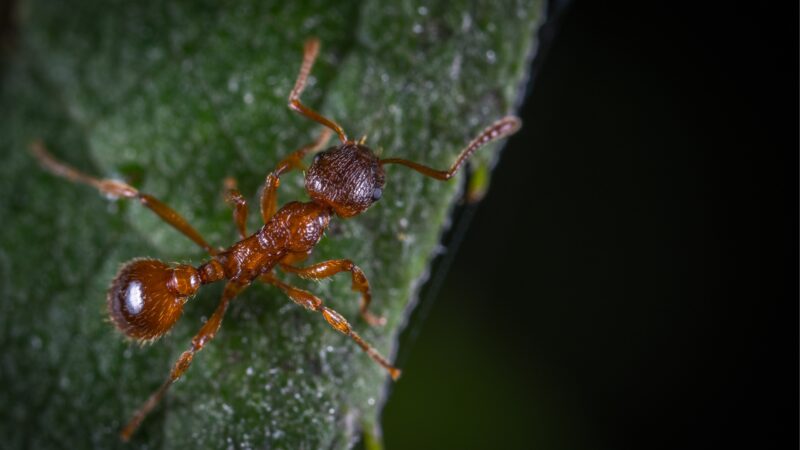
In the ant family, fire ants are infamous for their itchy and painful bites. A fire ant sting is around half an inch in diameter and usually causes intense itching.
It is accompanied by swelling that can last for a day or two. While fire ant stings can be generally harmless and less irritating, their venom can still trigger anaphylaxis in some people.
What to Do?
If you have been bitten by a fire ant, the first thing to do is to clean the affected area with soap and water. Then, you may proceed to apply a cold compress to reduce the swelling and itching.
If the itching persists, and you notice your allergies flaring up, then it’s best to take an oral antihistamine to counter these reactions.
Related: Fire Ant Bite Remedies | What Work and What Don’t?
Tick Bites
Another common insect bite is those from ticks, especially if you have pets at home. Interestingly, tick bites do not cause any pain or itching in humans.
You’ll only notice that you’ve been bitten because of the target-like bite mark that it leaves on your skin. To describe the bite further, you’ll notice a red bump on your skin that’s surrounded by a separate red ring.
However, while tick bites are not painful or itchy, ticks are known to be carriers of various diseases. Thus, these should be treated as soon as you spot one.
What to Do?
In the case of tick bites, the best remedy is to apply an after-bite cream to the affected area. An after-bite cream like the Sallye Ander “No-Bite-Me” All-Natural Bug & Insect Repellent not only soothes the area but also serves to prevent other ticks from biting you again.
- ALL-NATURAL, 4-HOUR PROTECTION: Our unique blend of pure...
- 2-IN-1 BUG REPELLENT & AFTER-BITE CREAM: “No-Bite-Me” does it...
- FAST-ACTING SCENT: Active ingredients including mint, lemongrass,...
- TRUSTED BY FAMILIES FOR OVER 40 YEARS: “No-Bite-Me” is safe...
- SALLYE ANDER PROMISE: When you buy Sallye Ander products, you can...
Chigger Bites
Chigger bites made by berry bugs are among the most annoying insect bites you can experience. These are tiny red bumps that appear to be arranged in a straight line and can be extremely itchy, especially when it’s warm.
Interestingly, these bites usually appear where the seams of tight-fitting clothes touch your body, particularly at the ankles, lower legs, waist, and behind the knees.
What to Do?
As soon as you notice the chigger bites, it’s advised to take a shower or clean the infected area with soap and water. This will prevent any possible infection and remove any microscopic berry bugs that may have transferred to your skin.
Then, you can apply a hydrocortisone cream like the Cortizone 10 Maximum Strength Overnight Itch Relief to help soothe the itching. Alternatively, you may simply run ice through the affected area of your skin.
- CONTAINS: One (1) 1-oz. tube of Cortizone 10 Maximum Strength...
- FAST & LONG LASTING: This maximum strength anti-itch creme...
- STOP THE ITCHSANITY: Cortizone 10 Overnight Anti-Itch Creme...
- OVERNIGHT ITCH RELIEF: Formulated with melatonin and other...
- RELIEVES ITCH: Maximum Strength Cortizone 10 helps relieve itch...
Additionally, it’s best to wash your pants and your clothes immediately to kill and prevent the spread of berry bugs in your home.
Related: Chigger Bite Treatment (Relief), Chigger Control and Prevention Guide
Brown Recluse Bites
A brown recluse bite is an immediate cause for concern since it has been recorded to cause severe tissue damage if not treated. You will first notice severe burning pain and itching at the bite spot, which will be followed by redness or bruising of the skin a few hours after.
In severe cases, the bite may even lead to fever, body aches, and nausea since the venom from the brown recluse is known to be toxic.
What to Do?
As a first aid, you have to wash the bite area immediately with soap and water. Then, you should apply a cold compress to soothe the burning pain. It is also advised to take an over-the-counter painkiller to help manage the symptoms.
The next step is to seek immediate medical care after you’re done with the first aid treatment. This will ensure that the affected area won’t become worse.
Mosquito Bites
Mosquito bites are undoubtedly common. A bite can leave a welt that’s at least half an inch in diameter and is visibly pink or red. It can also be itchy, which can make you uncomfortable.
While generally harmless, their saliva may contain viruses that can cause diseases like dengue fever.
What to Do?
The first thing you have to do in case of a mosquito bite is to clean the area. You can do so with soap and water or with rubbing alcohol. Then, you can apply an itch relief cream like Nature’s Willow Bug Bite Balm to ease the discomfort.
- Non-Toxic, Dye-Free, Paraben-Free. Ammonia-Free....
- Natural Bug Bite Relief: Our patented formula combines White...
- Packed with Essential Oils: Enjoy the natural anti-inflammatory...
- Fast-Acting & Long-Lasting: Our soothing, ammonia-free insect...
- Easy, Portable & Kid Friendly: Get soothing relief from bug bites...
Since mosquitoes are potential carriers of diseases, try to monitor yourself and seek medical attention immediately if you notice signs and symptoms like fever and nausea.
Flea Bites
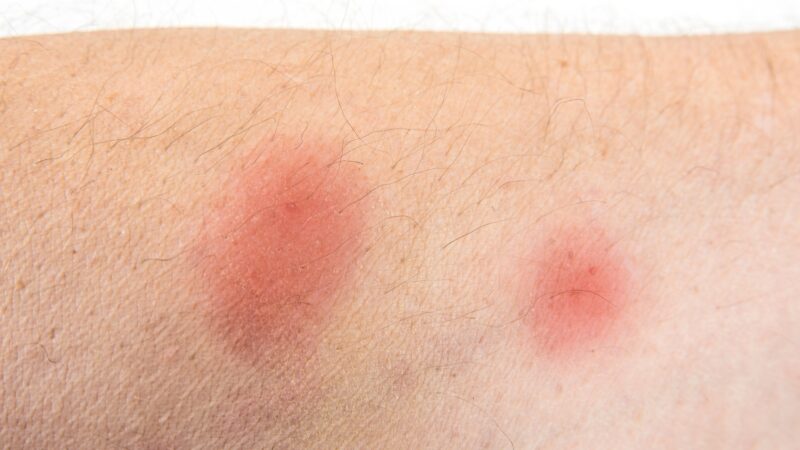
If you have pets around the house, then you are familiar with flea bites. Bites from this bug will have small reddish bumps that may sometimes be filled with pus. They are also extremely itchy, and scratching them will only make the bite worse.
Flea bites may also trigger allergic reactions in some people, and this may result in a rash or hives. And like mosquitoes, fleas may also carry diseases.
What to Do?
When bitten by a flea, you should always clean the affected area first to avoid the risk of infection. The ideal soap to use has anti-bacterial properties, such as the Dettol Anti-Bacterial Hand and Body Bar Soap .
- Pack of 12 individually bars, each bar is 110 gr / 3.88 oz
- NEW…Discover the Dettol soap bar
- A new formula that kills 99.9% of bacteria and remove viruses for...
- An improved level of fragrance to deliver at each drop a superior...
- Dettol Original soap with a new formula, gives protection causing...
Then, you can apply a cold compress to the affected area to help relieve the itch. If you notice a rash developing, then it’s best to take an oral antihistamine to combat the symptoms as soon as possible.
Related: Flea Bites on Humans: Identification, Treatment, Allergic Reactions & More
Puss Caterpillar Stings
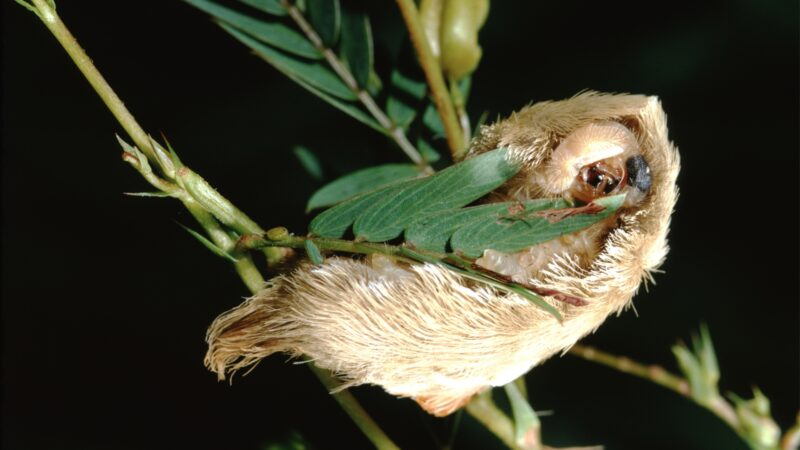
Stings from a puss caterpillar are one of the most excruciatingly itchy stings you will ever experience. Aside from the burning itch, these stings will also be accompanied by a throbbing pain.
Unlike most insect bites that only appear with one bump, a puss caterpillar sting can produce multiple bumps with raised ridges. This is because the hairs on the puss caterpillar are responsible for the stinging.
In severe cases, the puss caterpillar sting can also lead to difficulty breathing, nausea, and swelling of a large portion of the body.
What to Do?
If you have been stung by the puss caterpillar, you should first stick surgical tape like the Nexcare Gentle Paper First Aid Tape on the affected area. Make sure that the tape covers the entire sting area. Then, pull the tape off to make sure that the puss caterpillar hairs are removed.
- GREAT FOR FREQUENT CHANGES: 2 rolls of 1-in x 10-yds Nexcare...
- SECURE: Firmly secures gauze for dressing wounds
- CONFORMABLE: Tape easily wraps around fingers, wrists and elbows
- BREATHABLE: Non-irritating and breathable medical paper tape...
- TEARABLE: Medical tape tears easily in both directions and...
The next step is to wash the affected area with soap and water. Once you’re done washing, you should apply an anti-itch gel like the Benadryl Extra Strength Anti-Itch Gel to provide relief against the intense itching.
- ANTI ITCH GEL: Benadryl anti itch gel temporarily provides pain...
- TOPICAL ANALGESIC: Topical cooling gel contains 2% of the topical...
- SOOTHING & COOLING GEL: Carry this topical anti itch analgesic...
- POISON IVY REIEF: Topical Analgesic to provide itch relief for...
- INCLUDES: Pack of 1, 3.5 fl. oz. anti itch gel; Suitable for...
Scabies
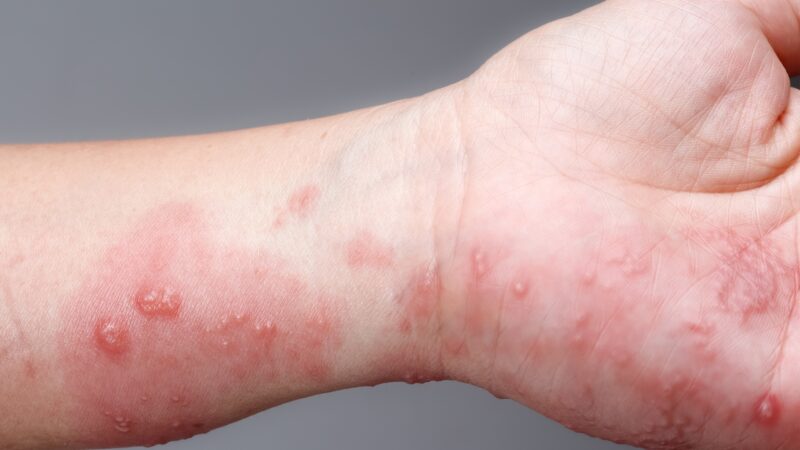
Scabies refers to the itchy pimple-like rash that appears on your skin. It is caused by microscopic parasites that tend to burrow under the skin to live and lay eggs there. While not all scabies is itchy, some may cause quite the discomfort and can be unsightly.
What to Do?
Fortunately, scabies is easy to treat. Simply use a cream or lotion that’s specially formulated to kill and get rid of scabies, such as the Mite-B-Gone 10% Sulfur Lotion . Simply include it as part of your daily routine until the acne-like bumps have cleared.
- Mite-B-Gone Sulfur Lotion is a natural blend of nourishing...
- Mite-B-Gone's Lotion is a 100% Natural Formula that includes...
- You may notice the Sulfur micro-particles have a slightly gritty...
- Mite-B-Gone Lotion gives you lasting relief WITHOUT harsh...
- Proudly small-batched by our skilled production technicians in...
Scorpion Stings
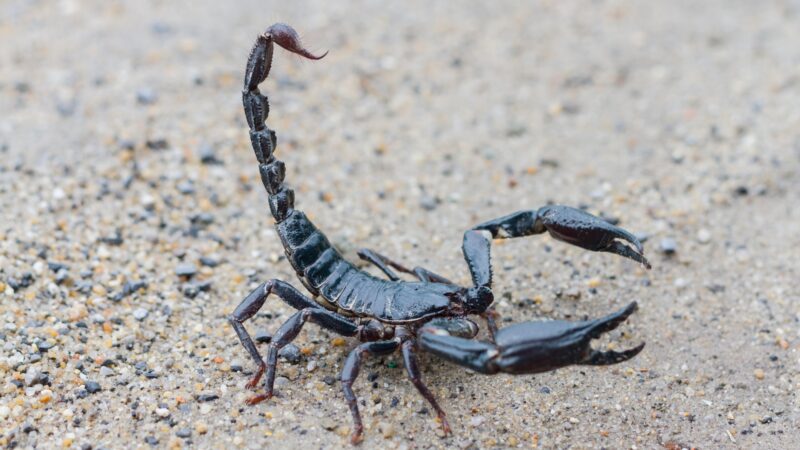
Scorpions have a bad reputation because of their venomous stings that can lead to life-threatening consequences. With that said, it’s easy to tell if you’ve been stung by a scorpion because of the accompanying symptoms.
While the sting site itself appears unassuming – a tiny dark dot surrounded by pink-colored skin – it will make you feel a burning pain. At times, the entire sting site will also feel a bit of numbness accompanied by aching muscles. And in extreme cases, you will experience intense drooling, vomiting, tachycardia, and hypertension.
What to Do?
You should seek medical attention immediately if you have been stung by a scorpion. As a first aid remedy, you may wash the area and apply a cold compress to help numb the pain. You can also take an over-the-counter antihistamine to help slow down the body’s reaction to the venom.
List of Sources
Insect bites and stings. (2021). Healthdirect.
Insect venom allergies. (2020). National Library of Medicine.
Bee and Wasp Stings. Children’s Hospital of Philadelphia.
Allergies to bites and stings. State Government of Victoria – Betterhealth.
- How to Get Rid of Copperheads | Practical Guide - August 27, 2023
- How to Get Rid of Corn Snakes | What Makes Them Aggressive? - August 27, 2023
- How to Get Rid of Alligators | Safety Measures and Removal Methods - July 16, 2023







